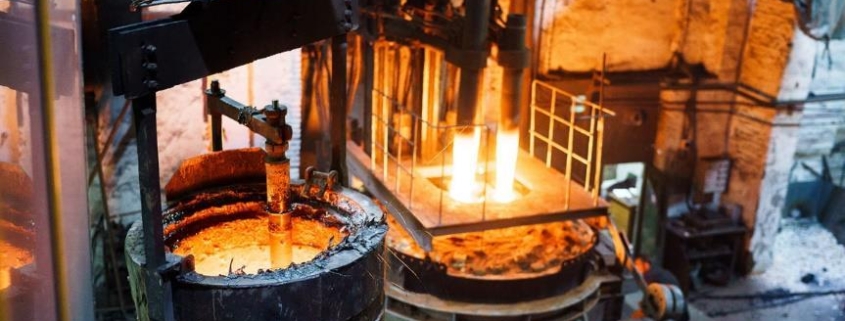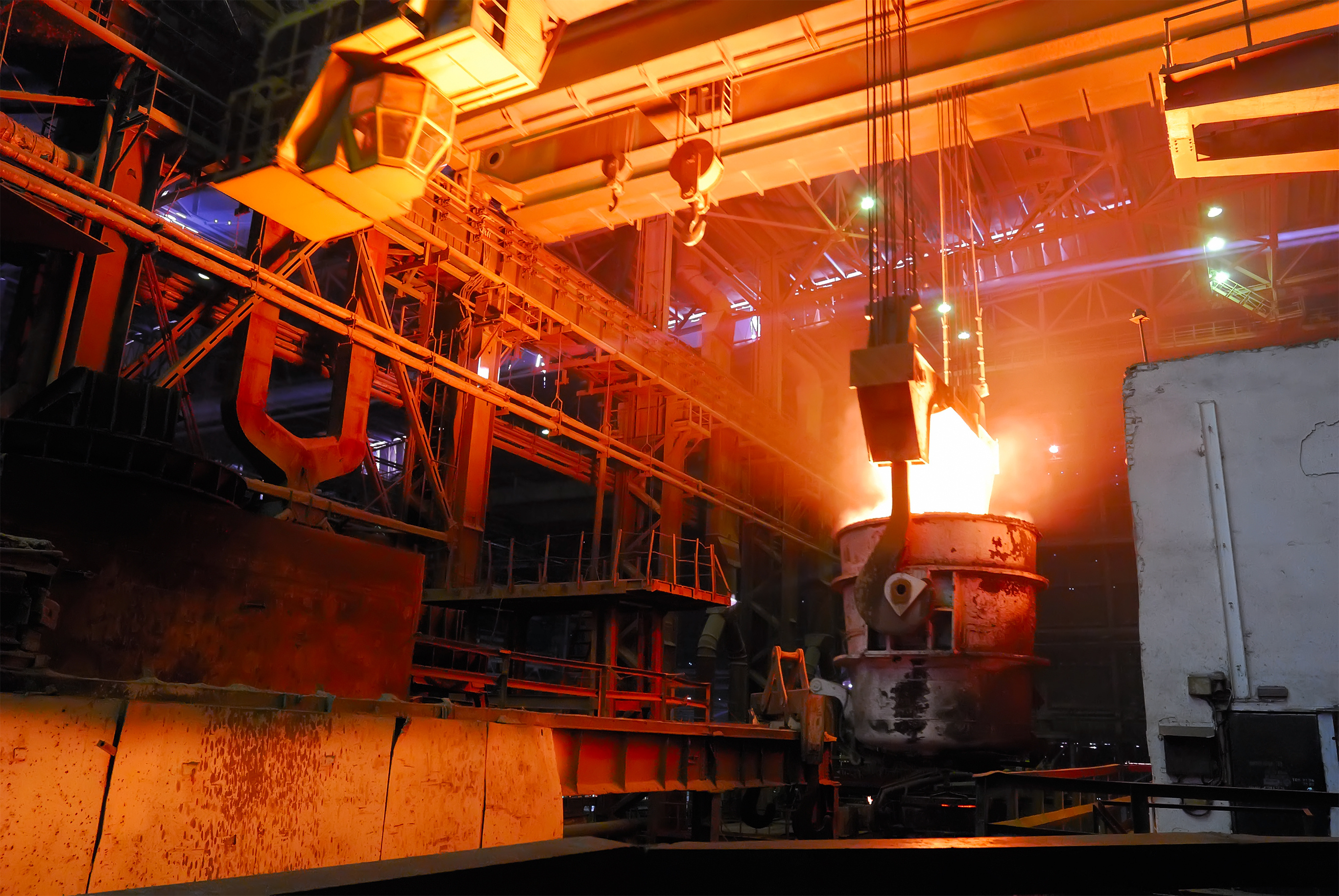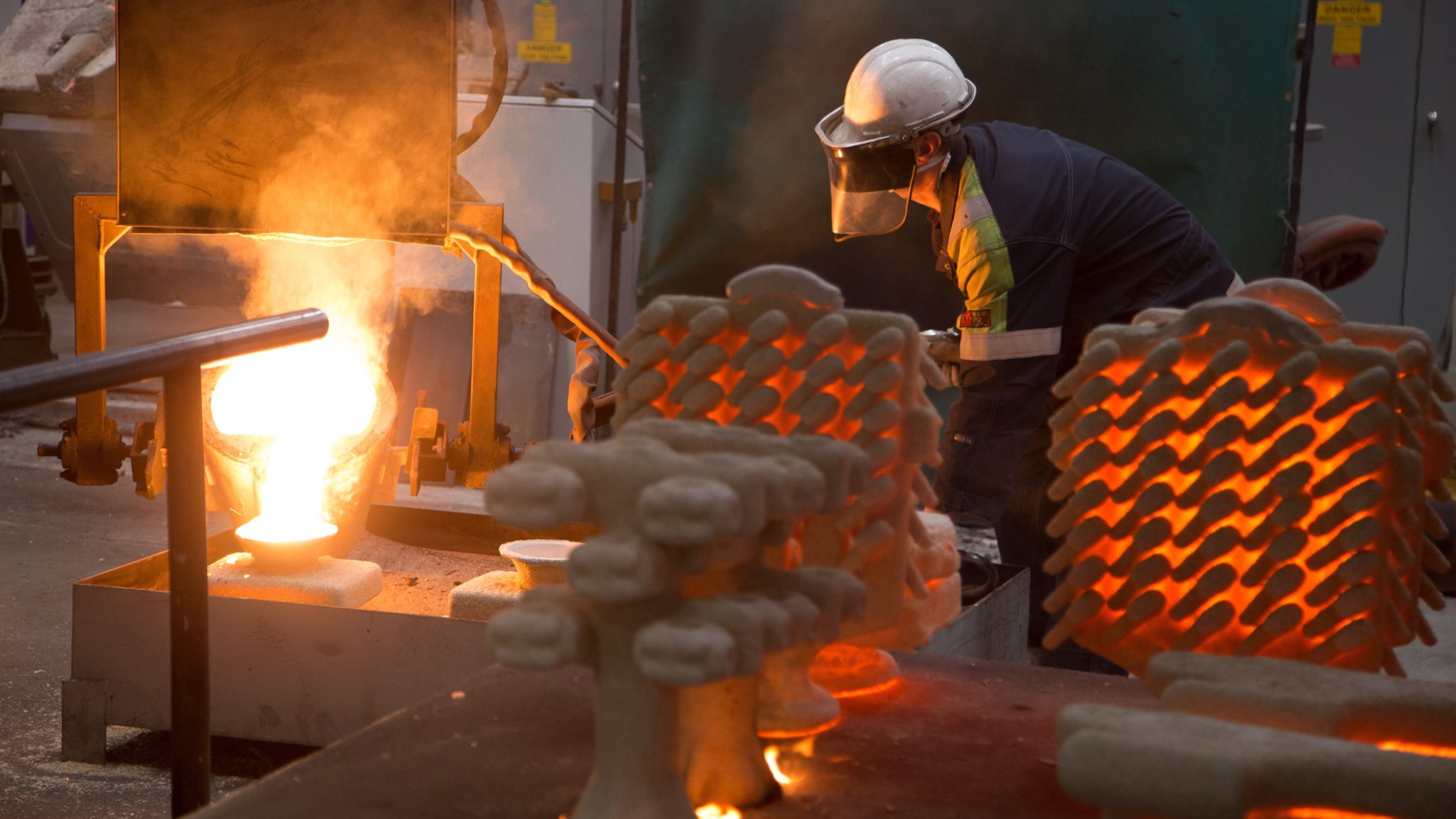Ductile iron
Ductile iron is obtained by graphitizing annealing of white iron of a certain chemical composition, which ensures the formation of a compact graphite in the annealing process, which gives the ductile iron increased mechanical properties (tensile strength σB, elongation δ and shock viscosity Ah).
The recommended chemical composition of ductile iron is characterized by a reduced content of graphitizing elements C=2,4-2,9%; Si=1,0-1,6%; C+Si=3,6-4,2%, due to the need to obtain castings of ductile iron in the cast state with 100% bleach throughout the casting section, for the simple reason that in the presence of cast iron in the structure of plate graphite, in the subsequent annealing process will be formed plate graphite (ie, gray iron), rather than compact, inherent in ductile iron cast iron.
It is common to distinguish between ductile ductile iron, obtained by graphitizing annealing and white-hearted ductile iron, obtained by decarbonizing annealing in an oxidizing medium (usually castings are arranged in containers mixed with iron ore, t=1000-1050°C, τ=60-70 h). Thin-wall castings from white-hearted ductile iron are produced in France, Germany, Italy and other countries, the main advantages of such cast iron are increased viscosity and suitability for welding without preliminary and subsequent heat treatment.
Heat treatment
Graphitizing annealing is an integral technological operation of the process of producing ductile iron. The main purpose – to carry out graphitization, ie, the allocation of graphite from cementite, the process is possible for 2 variants: full graphitization of cementite, to obtain a ferritic metal matrix and partial graphitization of primary and ledeburite cementite, to obtain a perlite or perlite-ferrite metal matrix.
Regardless of the selected option, graphitizing annealing is carried out in two stages
Stage 1 involves: heating to a temperature 930-1050°C at a rate of 200-300°C/h; delay for ~10 h. At this stage, the decomposition of the primary cementite and ledeburite, resulting in an austenitic matrix with inclusions of flocculent (compact) graphite (see Fig. 1). This is followed by a decrease in temperature to ~760°C (at a rate of 50-65°C/h), i.e. to a temperature slightly above the beginning of the eutectoid transformation.
Stage 2 provides for slow cooling at a rate not exceeding 5°C / h in the entire range of eutectoid transformation, up to ~700°C. at this stage, the decay of cementite entering perlite occurs. The final microstructure of cast iron depends on the parameters of the second stage: short-term exposure (~5 h) entails the formation of a perlite structure of the metal matrix with the inclusion of compact graphite, around which the ferrite edge is located; long exposure for 20-40 hours, leads to the formation of a ferritic metal matrix with inclusions of compact graphite, which is well shown in Fig. 1.
The main disadvantage of the process of producing ductile iron is a long process of heat treatment, which at the current high electricity prices leads to significant costs. To reduce the duration of annealing, ductile iron is subjected to modification and microallocation with aluminum (0.01%), boron (0.003%), titanium (0.03%), bismuth (0.003%), which leads to an increase in the melt of the graphitization centers and a decrease in the stability of cementite.
Advantages of ductile iron:
The combination of high mechanical properties with high machinability of cutting (compact graphite contributes to chip breakage and is a lubricating material)
Uniform structure throughout the casting section
The lack of internal stresses in the castings
Ability to perceive high alternating loads
High corrosion resistance
Ductile cast iron used for the production of small thin-walled castings (3-50 mm) for critical applications working under dynamic alternating loads in the automotive industry, tractor and agricultural mechanical engineering for the manufacture of gear boxes, parts of drive mechanisms, chassis, levers, crankshafts and camshafts, clutch parts, pistons, diesel engines, rocker arms valves, fittings, etc.



